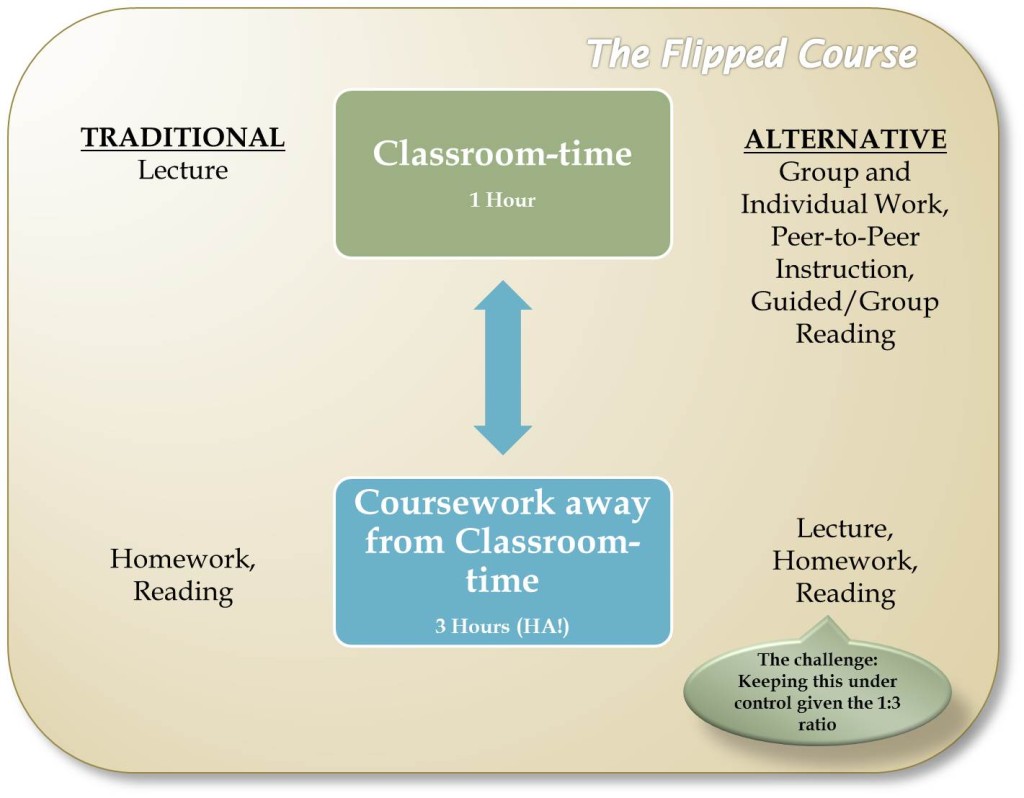One of the great things about emerging digital technologies is the conversations they spark regarding old practices. How can those practices be enriched by the new? That's really the fundamental question that drove much of our morning session on "flipped courses" for the Syracuse University Summer Institute for Technology Enhanced Teaching and Learning (#SITETL2014).

The flipped course (or classroom) is not new. Rather, it is a pedagogical approach the takes into consideration what happens "in the classroom/classtime" and what happens "outside the classroom/classtime in relationship to the course."
Traditionally, the teacher–>student delivery of lecture content in the classroom was augmented by homework and reading assignments outside the classroom. Now, however, the possibility exists for teachers to deliver the lecture outside the classroom via video, podcast, annotated/voiced over PowerPoint, or Adobe Connect-esque web conferencing. This allows for the transformation of the classroom and classtime into a "place-event" for teachers and students to interact in other ways: working group interaction with periodic instructor engagement, peer-to-peer (and student–>teacher) instruction, etc.
One of the dangers of flipping, however, is the tendency for instructors to inadvertently make the flip into a moment to add more content. Although we all laughed at the old 1:3 ratio (every 1 hour spent in class should be accompanied by 3 hours of the student doing homework, reading, prepping for the course) because we know that it is a pipedream, the flip probably won't work if we transform it into a way of enforcing the 1:3 ratio or upping the ratio to 1:4 or 5 or beyond. We spent a fair amount of time discussing the other things that students have going on in their lives at present: in addition to other classes, many are involved in internships and work (on campus and off), clubs, sports, etc. Thus what we ask students to do outside of class needs to be well justified, incentivized, and packaged in ways that make it easier for the student to engage for at least part of the 3 in the 1:3 ratio.
Concepts for the day: universal design, flipped classrooms, Catme.org (this really GREAT website for helping establish working groups within the classroom . . . I can't WAIT to use this!), Prezi, answers.syr.edu (the go-to place at Syracuse for ANY questions about classroom technologies), learning modules/units/chunking, advanced organizers, Doceri (a really cool technology for allowing the use of an iPad (with stylus) to run a powerpoint lecture), and Jing.
Big epiphany: after getting the Microsoft Excel gradebook set up for the course . . . with all of the column input and weighted calculation fields built in . . . why not load a blank copy on blackboard so students can download their own copy, put their name in, and as they receive their grades, put those in for themselves? That way, they can easily keep track of where they stand throughout the semester.
You must be logged in to post a comment.